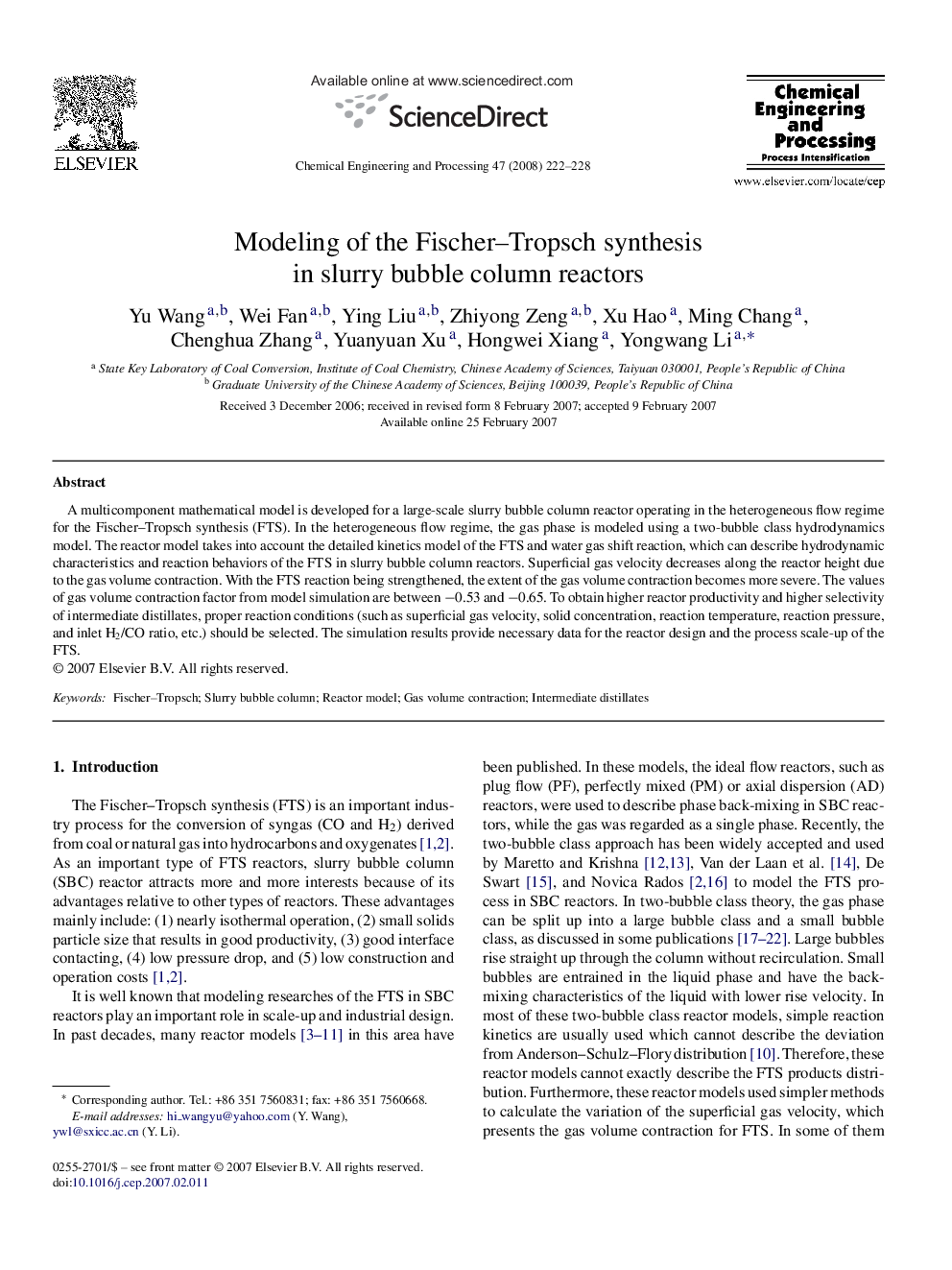| Article ID | Journal | Published Year | Pages | File Type |
|---|---|---|---|---|
| 688166 | Chemical Engineering and Processing: Process Intensification | 2008 | 7 Pages |
A multicomponent mathematical model is developed for a large-scale slurry bubble column reactor operating in the heterogeneous flow regime for the Fischer–Tropsch synthesis (FTS). In the heterogeneous flow regime, the gas phase is modeled using a two-bubble class hydrodynamics model. The reactor model takes into account the detailed kinetics model of the FTS and water gas shift reaction, which can describe hydrodynamic characteristics and reaction behaviors of the FTS in slurry bubble column reactors. Superficial gas velocity decreases along the reactor height due to the gas volume contraction. With the FTS reaction being strengthened, the extent of the gas volume contraction becomes more severe. The values of gas volume contraction factor from model simulation are between −0.53 and −0.65. To obtain higher reactor productivity and higher selectivity of intermediate distillates, proper reaction conditions (such as superficial gas velocity, solid concentration, reaction temperature, reaction pressure, and inlet H2/CO ratio, etc.) should be selected. The simulation results provide necessary data for the reactor design and the process scale-up of the FTS.
